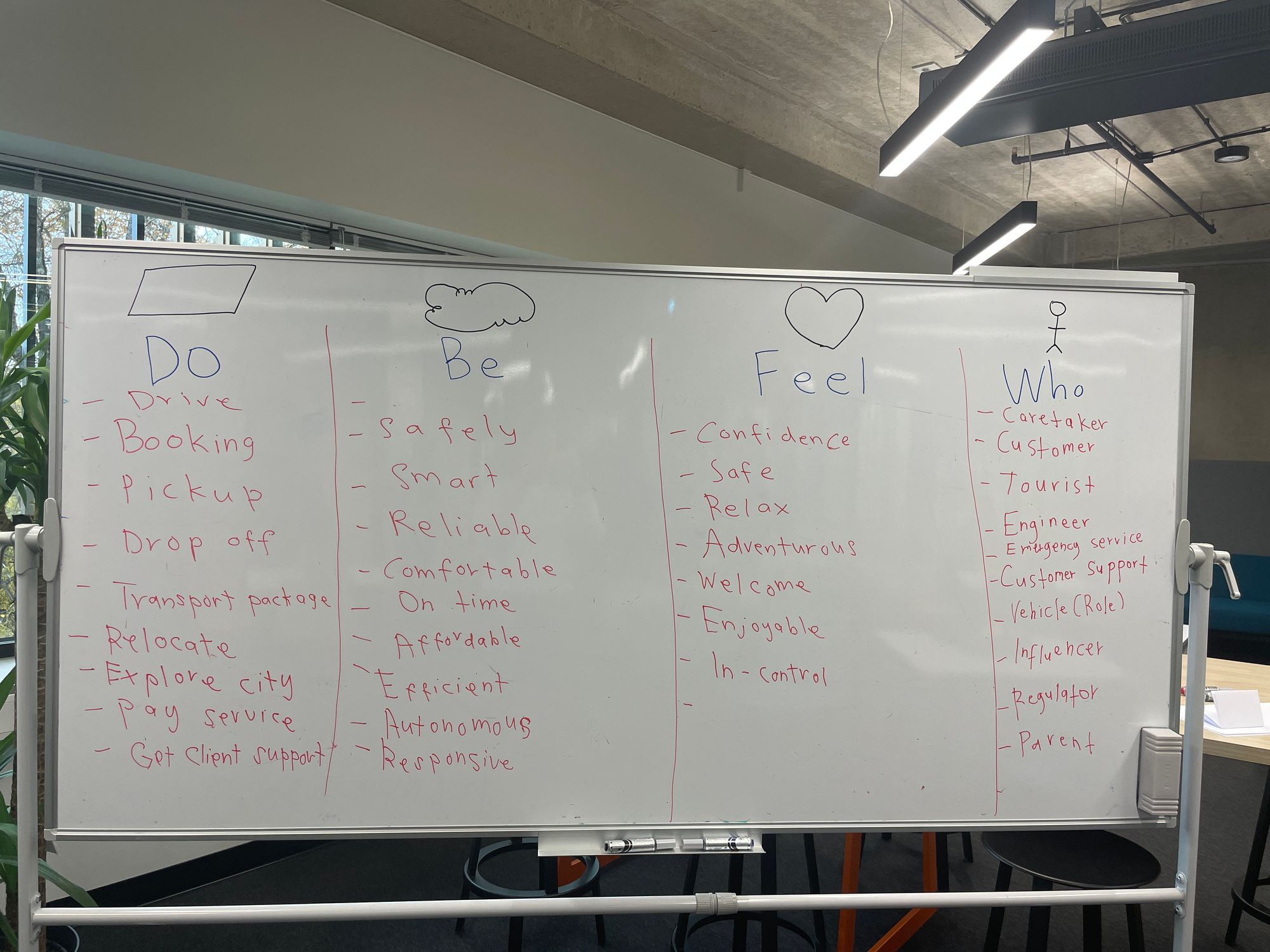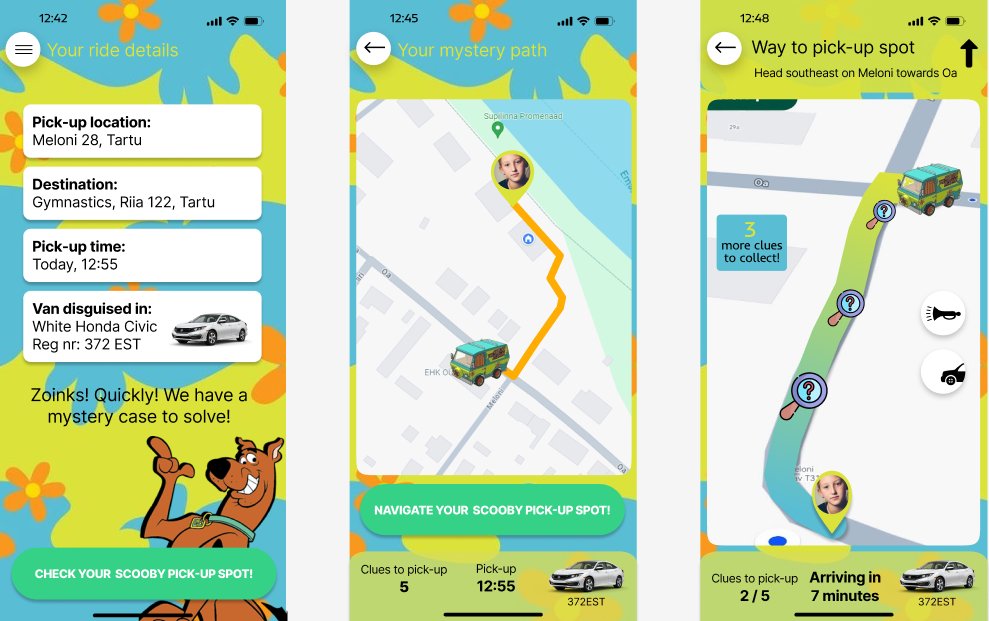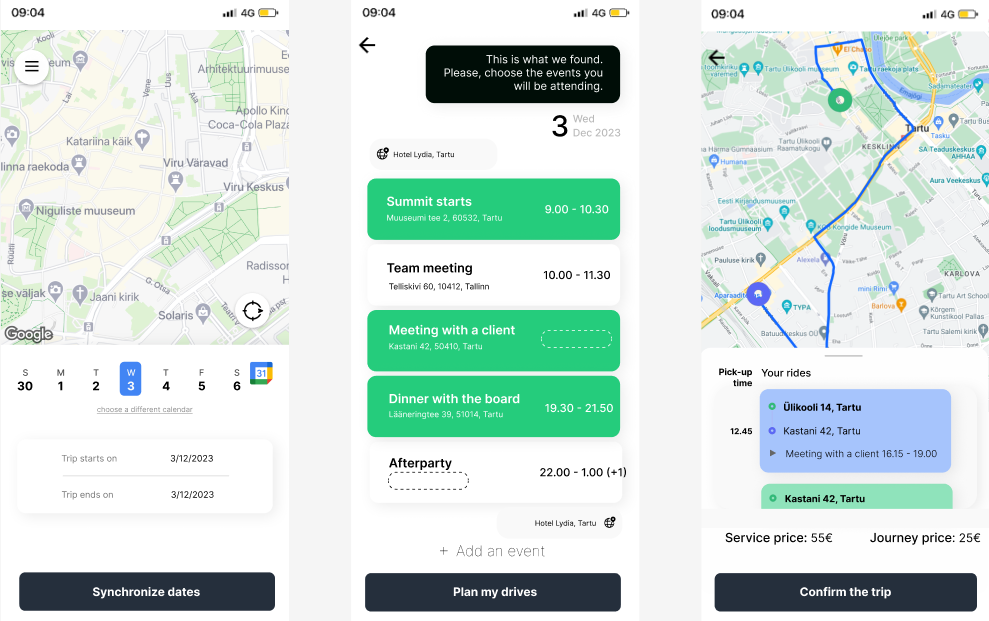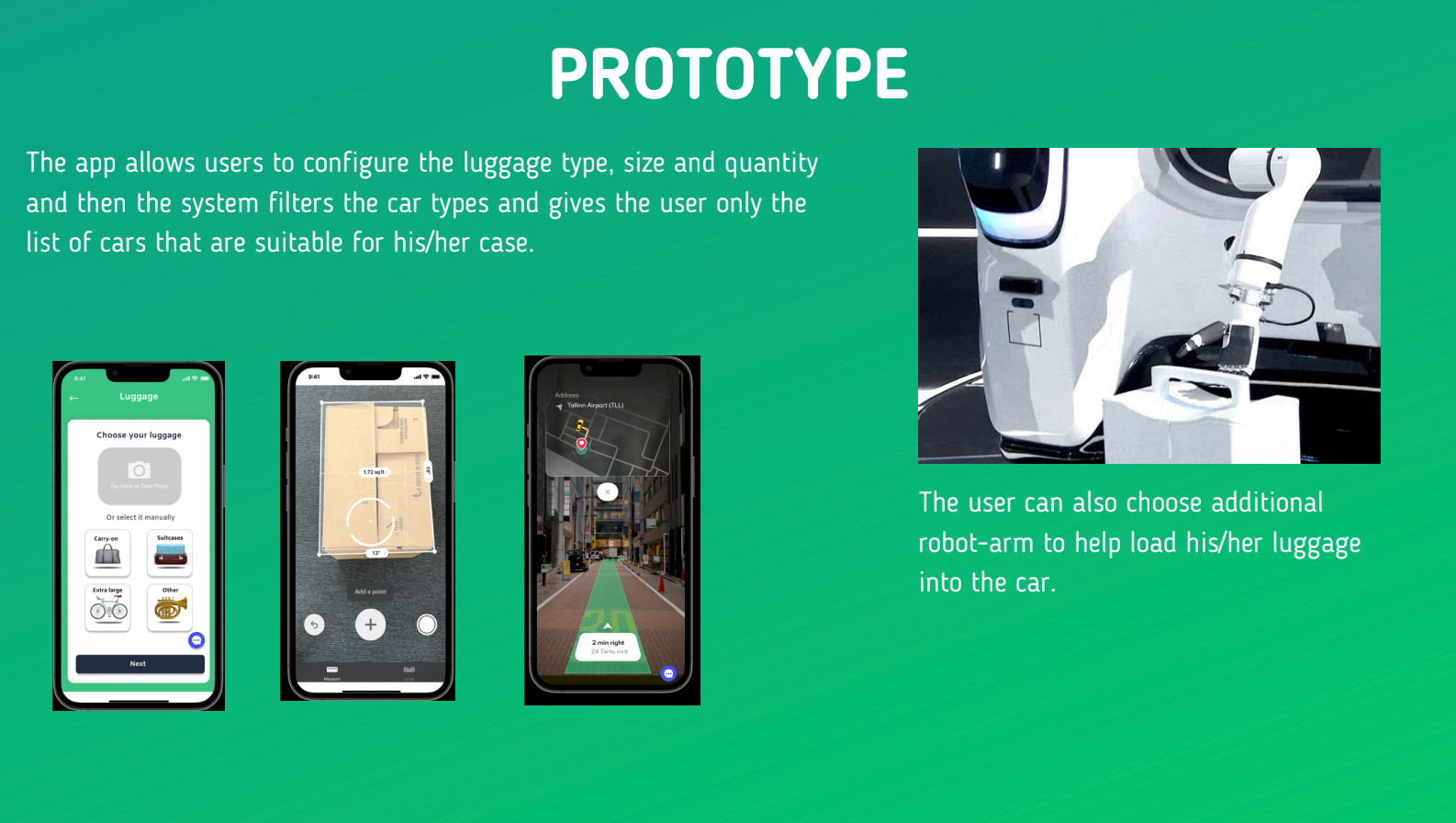Course: Digital Product Management Industry Project
Semester: Autumn 2023
Another semester of the Digital Product Management Industry Project has been successfully concluded. In this industry collaboration-focused course, the participating students are tasked with producing high-fidelity prototypes that could solve the problem statements provided by the industry partner. This time around, the course had five teams that all tackled problem statements from Bolt and the Autonomous Driving Lab here at the Institute of Computer Science.
Digital Product Management Industry Project is a unique course in the Institute of Computer Science. It teaches the students WHY they should solve some problem instead of jumping directly to HOW they should solve it. Most of the courses focus on methods and algorithms, but before that, you need to be sure you are solving the right problem. We got many imaginative ideas from students on how different customers would use robo-taxis in the future, and these guide our vision for the autonomous vehicles of tomorrow.
— Tambet Matiisen, head of the Autonomous Driving Lab
The challenge
Autonomous driving technologies are making steady progress, and you can already hire a completely driverless taxi on the streets of San Francisco. As the technology matures, more focus goes to the user experience of actually using services built with those technologies. We want to understand the crucial differences in user experience when using a human-driven taxi or driverless taxi. In particular, we are interested in some of the weaknesses of driverless vehicles that can be overcome by altering the way users interact with them.
Process and solutions
The participating students hailed from various Master’s Programmes: Computer Science, Conversion Master in IT, Software Engineering, Innovation and Technology Management, and Data Science. Such a diverse group of students brought many different skill sets, experiences, and perspectives to the table. They had the following five user groups, or Personas, to focus on:
- Families with children
- Elders and people needing medical transport
- Tourists visiting new cities
- Tourists handling oversized luggage
- The business travellers
Each team, consisted of 3-4 students, dedicated an entire semester to focusing on a specific Persona. This approach allowed teams to cultivate a profound sense of empathy for their Persona, and create a solution tailored to chosen Persona.

Throughout the semester, students diligently adhered to a structured progression of steps:
- Introduction, Process Overview, and Methods. The semester kicked off with a comprehensive introduction, providing students with an overview of the processes and methodologies they would be employing.
- Partner Problem Statements; Team Formation. Students delved into partner problem statements, forming teams that would collaboratively tackle these real-world challenges.
- Problem, Market & User Research. The teams engaged in extensive research, exploring the problem landscape, market dynamics, and understanding the needs of their target users.
- Product Vision: Design Opportunities. With insights gathered, students defined a compelling product vision, identifying design opportunities to address the identified challenges effectively.
- Ideation & Solution Sketching. This creative phase involved brainstorming and sketching potential solutions, fostering innovation and diverse perspectives within the teams.
- Prototyping. Students translated their ideas into tangible form through prototyping, developing both application interfaces and in-car displays.
- User Testing and Iterating 1. The initial user testing phase allowed students to gather valuable feedback, leading to iterative improvements in their prototypes.
- User Testing and Iterating 2. Building upon the initial feedback, students conducted further user testing and made additional iterations to enhance the usability and effectiveness of their solutions.
- Final Presentations. The semester concluded with students showcasing their journey and presenting the final versions of their solutions, reflecting the culmination of their efforts and the valuable lessons learned.
Navigating through complexities and uncertainties, students encountered diverse obstacles that tested their problem-solving skills and resilience. The journey, though demanding, proved transformative as it equipped them with a robust understanding of the intricacies involved in designing and managing digital products.
The project showed the importance of flexibility and resilience. I discovered the importance of a backup plan and being prepared to take the initiative when faced with unexpected roadblocks. This project was a profound learning curve, both professionally and personally. It wasn't just about developing a product but crafting a service that genuinely resonates with users' needs. I am thankful for the opportunity and look forward to leveraging these insights.
— Alicia Sudlerd, student of Elderly Team
Moreover, this time, the Industry Project course also had a guest lecture by Prof. Kuldar Taveter, Head of Chair of Software Engineering at the Institute of Computer Science, titled “Emotional Goals for Travelers in Autonomous Vehicles.” Professor Taveter walked students through the Do-Be-Feel method, allowing them to build deeper connections with their Personas.

In the end, students delivered high-fidelity prototypes tailored to their Personas. For instance, the Family Team developed a two-sided prototype with entertainment features for the child and additional safety measures for the parent. The Elderly Team took into account the Persona's potential discomfort with new technologies, ensuring sufficient support and addressing medical needs. Meanwhile, the Business Traveler team innovated with "The Moving Office," a solution allowing business professionals to maximize productivity seamlessly.


The Regular Tourist Team devised a solution enabling tourists to effortlessly plan their day in a new city, eliminating the need to engage with strangers or navigate unfamiliar roads. Finally, the fifth team, the Tourist with Luggage Team, developed a solution to assist travellers with oversized luggage in swiftly and easily securing a taxi, alleviating the stress of uncertainties about whether their belongings will fit.

Furthermore, students not only created prototypes for applications but also developed prototypes for in-car displays, aiming to consider the entire surroundings of the rider.
Therefore, the collaboration between Sandbox and Autonomous Driving Lab proved highly fruitful. Working hand in hand, we navigated challenges and harnessed collective strengths to create solutions that hold significant potential. We at Sandbox are hopeful that in the future, all users can enjoy smooth, safe, and comfortable rides in Bolt's self-driving taxis! 🚕